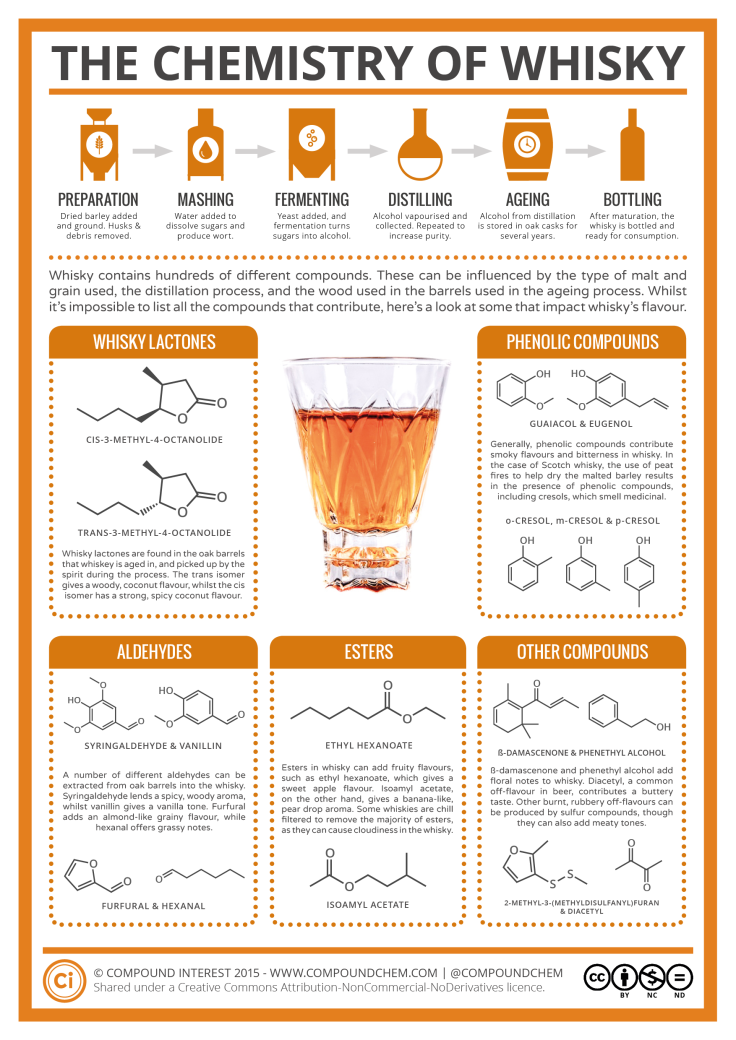Whiskey's Chemistry Brings All The Boys To The Still

Whether it's Scotch, rye or bourbon, whiskey is having quite the moment. Many people enjoy whiskey for its complexity, and that variety is due to its chemistry. Compound Interest has released an infographic detailing the rich chemistry behind your favorite spirit, breaking down how phenolic compounds, whiskey lactones, esters and aldehydes combine to create the perfect whiskey.
As Compound Interest explains, making whiskey is easy. Barley is soaked in water, and the drying process -- such as using peat fires for Scotch -- lends the first layer of flavor to the soon-to-be whiskey. Mashing -- milled barley and water -- breaks down the starch in barley to sugar. From there, it's a matter of fermentation, distillation and aging. These steps all play an important role in developing the final flavor and chemistry of whiskey.
Phenolic compounds are responsible for the smoky and bitter flavors of whiskey. These compounds come from, not surprisingly, the fire used in the drying process. The smoke from the peat fire or the char from oak barrels are soaked up by the barley. Guaiacol is responsible for the smoky flavor in whiskey while eugenol is responsible for the spicy aroma, according to Compound Interest.
If you detect a hint of coconut in your brandy, you're not crazy and you can thank whiskey lactones for that flavor. The compounds -- β-methyl-γ-octalactone -- are found in the oak barrels used in the aging process. Aldehydes, also found in the barrels, can lend vanilla, spice, smoke and grassy notes to whiskey.
During fermentation, esters are formed and provide a variety of aromas, but these compounds add to the cloudiness of the whiskey and are later removed during filtration. There is even more chemistry behind whiskey, but the next time you're drinking it neat, on the rocks or in an old-fashioned, you can raise your glass and salute phenolic compounds, whiskey lactones, esters and aldehydes for their hard work.

© Copyright IBTimes 2024. All rights reserved.






















